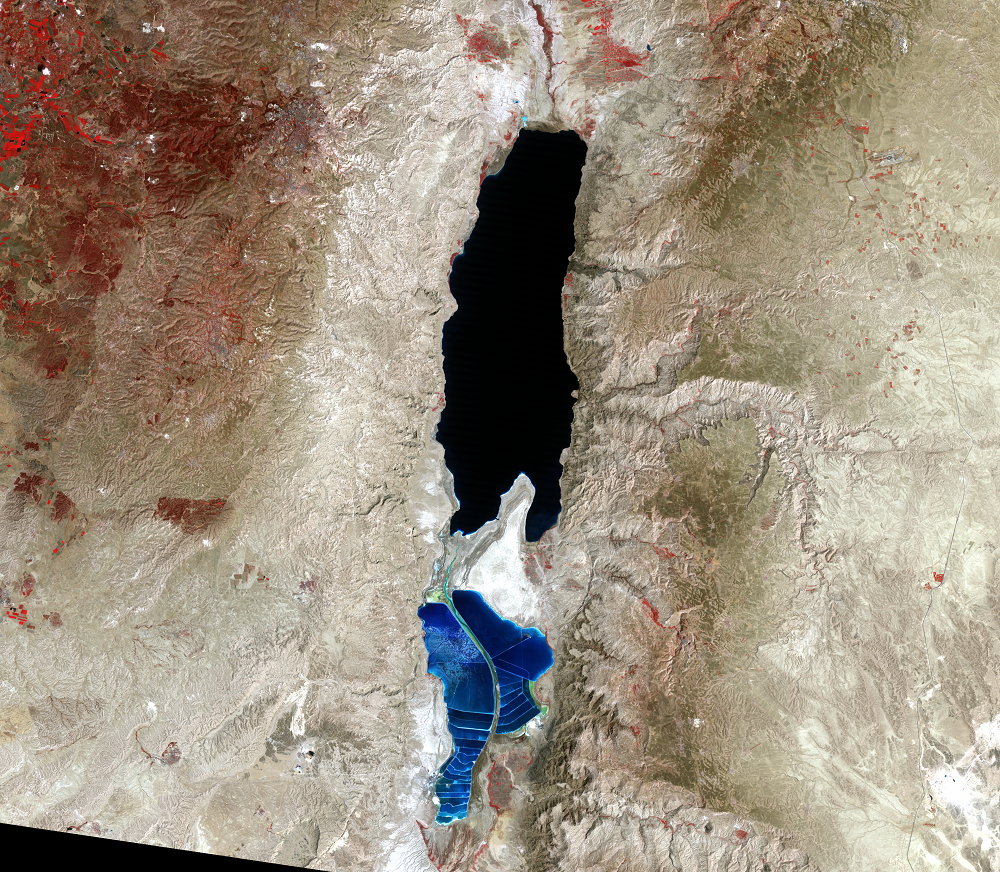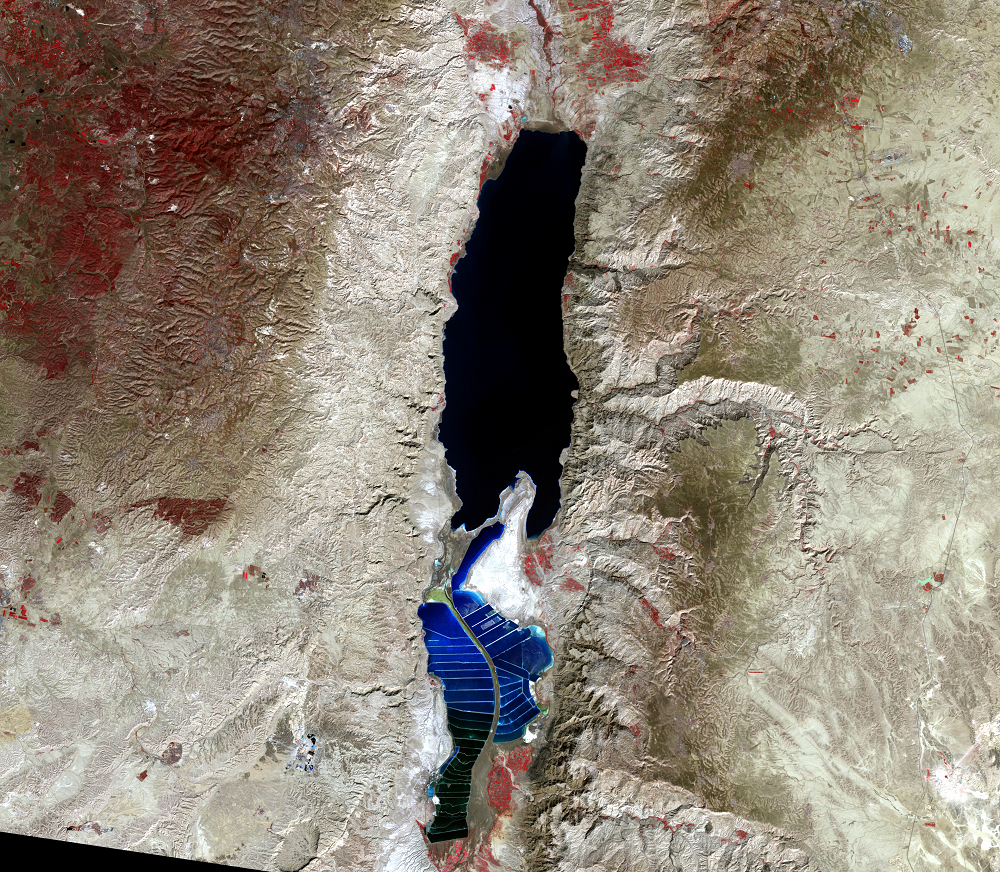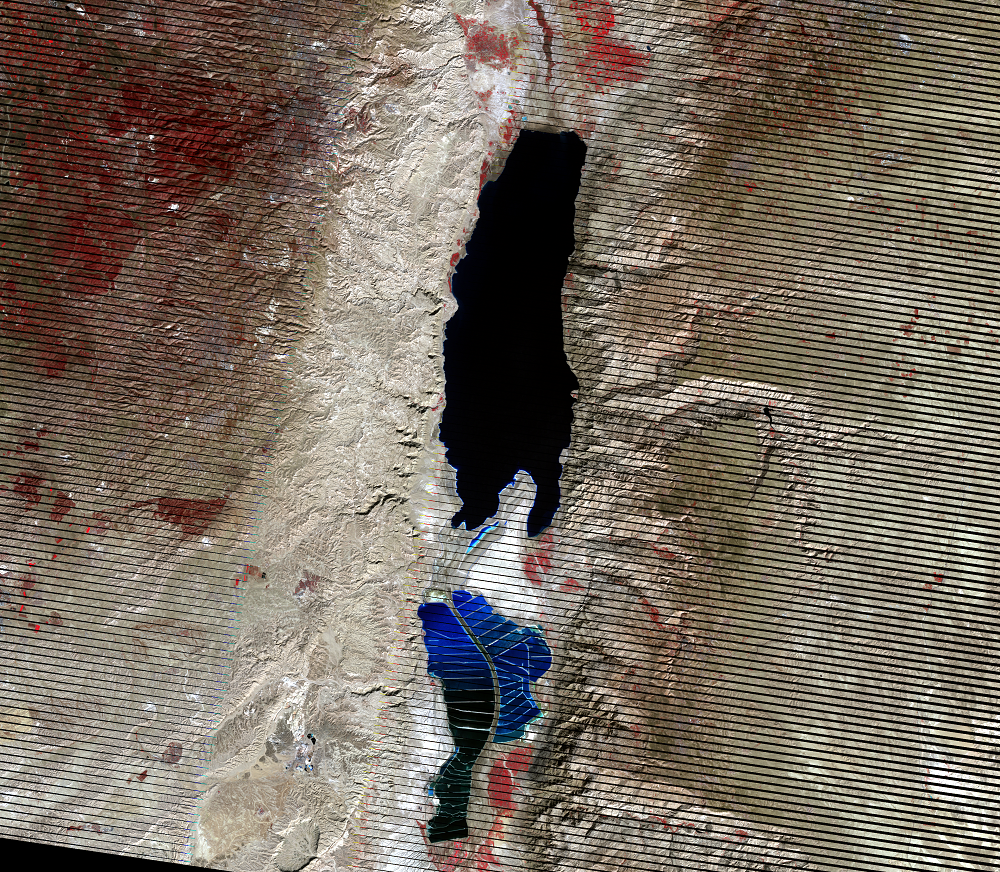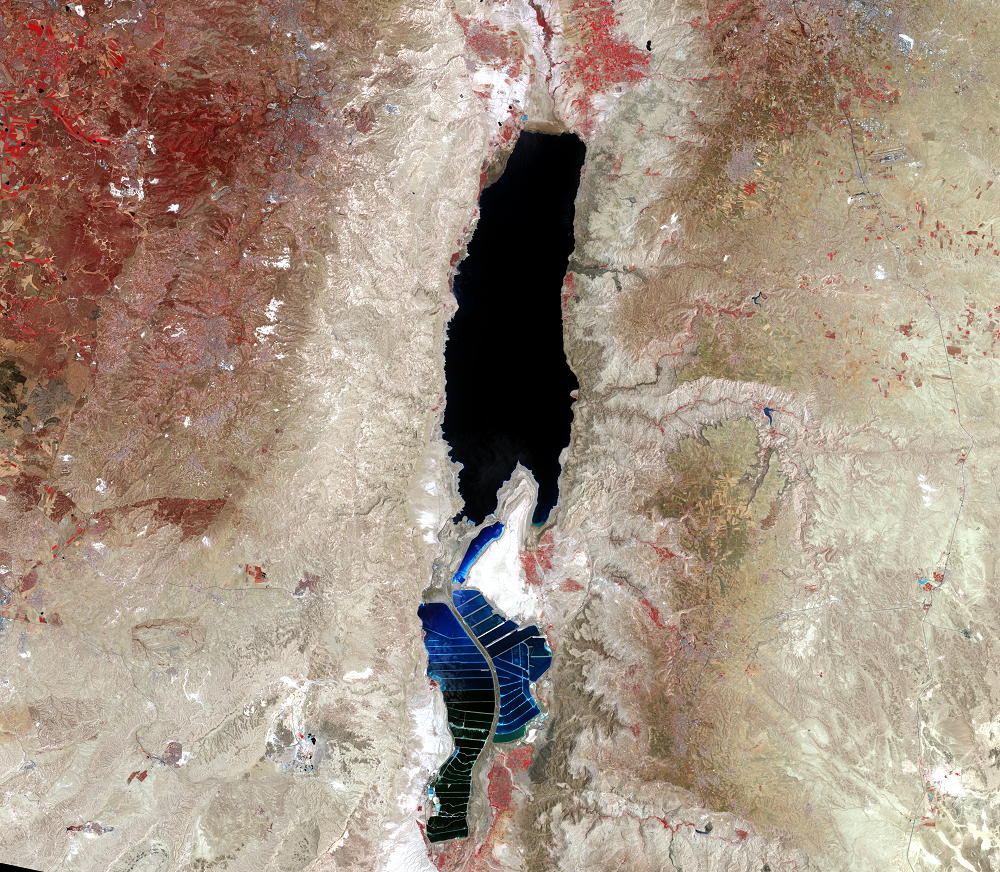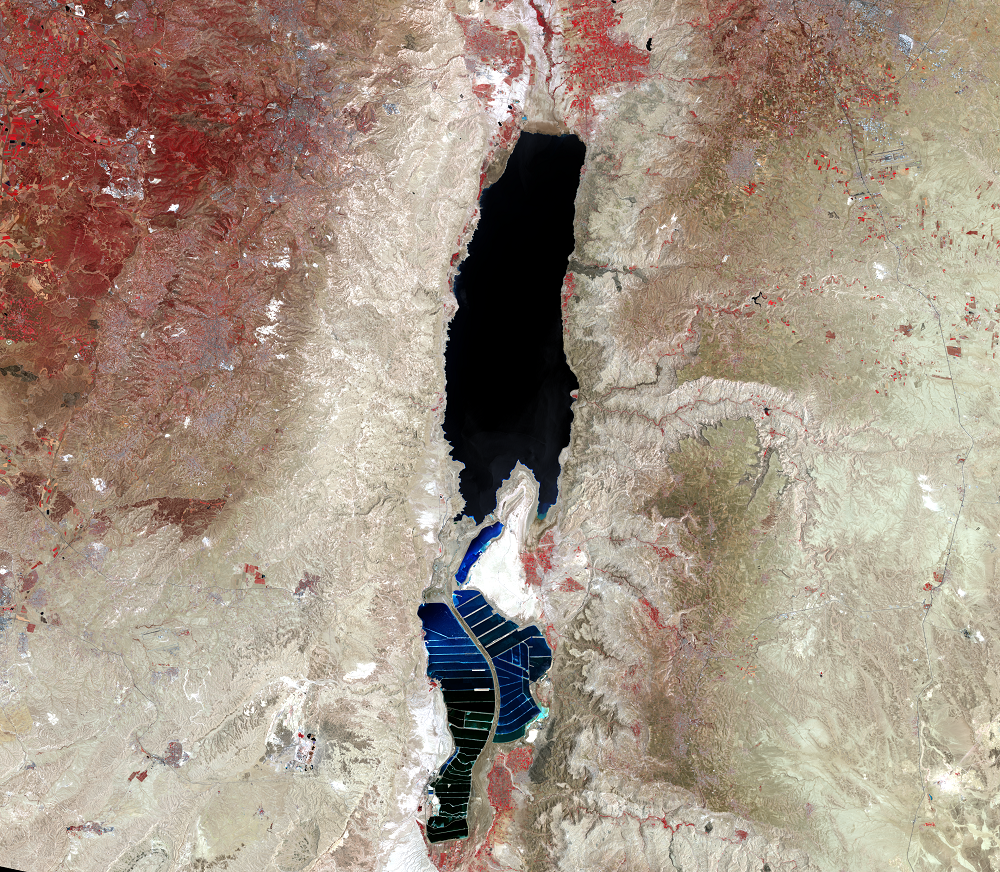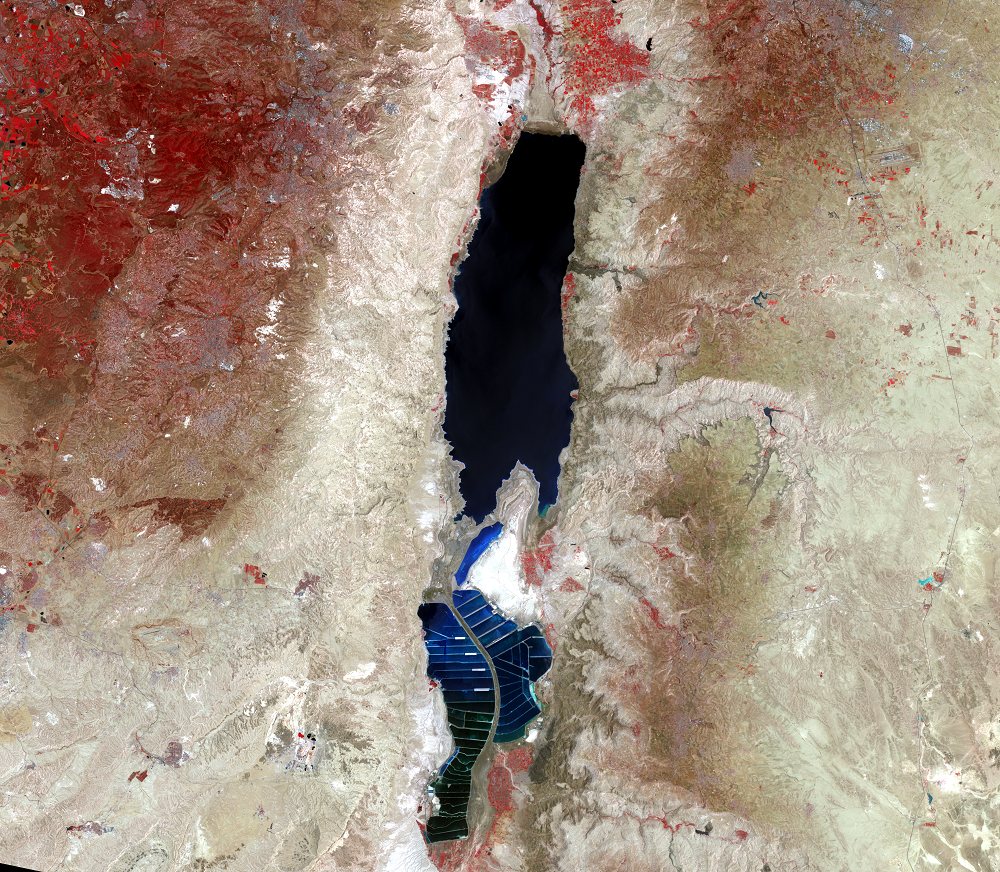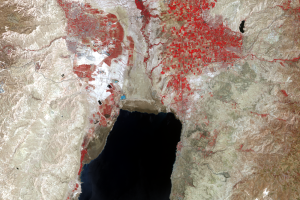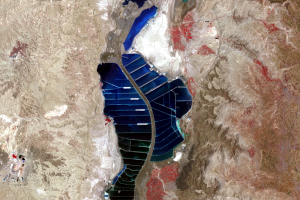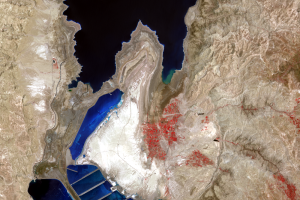
Dead Sea, Israel, Jordan, West Bank
Earth Resources Observation and Science (EROS) Center - Earthshots
The water surface level of the Dead Sea is the lowest natural land or water surface on Earth at more than 400 meters below sea level. That level continues to lower as water from Dead Sea tributaries is diverted for irrigation. In the southern part of the sea, the salt and potash industries use water from the sea in evaporation ponds. Water is not quickly replenished in this closed basin, so the level continues to drop.
The sea is made up of a northern basin and a southern basin. Both basins were once connected by a strait (see the 1973 image), but the strait is now dry.
(Black stripes run through some of the Landsat 7 images because its Scan Line Corrector failed in May 2003.)
Imagery
Downloads
AL-Khlaifat, A.L., 2008, Dead Sea rate of evaporation: American Journal of Applied Sciences, v. 5, no. 8, p. 934–942.
Bashitialshaaer, R.A.I., Persson, K.M., and Aljaradin, M., 2011, The Dead Sea future elevation based on water and salt mass balances: International Journal of Sustainable Water and Environmental Systems, v. 2, no. 2, p. 67–76.
Closson, D., 2005, Structural control of sinkholes and subsidence hazards along the Jordanian Dead Sea coast: Environmental Geology, v. 47, no. 2, p. 290–301.
Closson, D., and Abou Karaki, N., 2009, Human-induced geological hazards along the Dead Sea coast: Environmental Geology, v. 58, no. 2, p. 371–380.
Closson, D., Karaki, N.A., Hansen, H., Derauw, D., Barbier, C., and Ozer, A., 2003, Space-borne radar interferometric mapping of precursory deformations of a dyke collapse, Dead Sea area, Jordan: International Journal of Remote Sensing, v. 24, no. 4, p. 843–849.
Closson, D., LaMoreaux, P.E., Abou Karaki, N., and al-Fugha, H., 2007, Karst system developed in salt layers of the Lisan Peninsula, Dead Sea, Jordan: Environmental Geology, v. 52, no. 1, p. 155–172.
Glausiusz, J., 2010, Environmental Science—New life for the Dead Sea? Nature, v. 464, p. 1118–1120.
Gorodeisky, S., 2018, Dead Sea level falling 1.2 meters per year: Globes, accessed June 30, 2020, at https://en.globes.co.il/en/article-dead-sea-level-falling-12-meters-per-year-1001223618.
NASA, 2012, The Dead Sea: NASA Earth Observatory, available at http://earthobservatory.nasa.gov/IOTD/view.php?id=77592. (Accessed April 8, 2013.)
Patel, K., 2019, Getting Saltier: NASA Earth Observatory, accessed June 30, 2020, at https://earthobservatory.nasa.gov/images/145373/getting-saltier.
UNEP, 2005, Water—Dead Sea, Jordan, in One planet, many people—atlas of our changing environment: Nairobi, Kenya, United Nations Environment Programme (UNEP), p. 130–131.
Vick, K., 2011, The Dead Sea—Deader than ever and getting more so: Time World, available online at http://www.time.com/time/world/article/0,8599,2084164,00.html. (Accessed April 8, 2013.)
Whitehead, P., Butterfield, D., Black, E., and Plinston, D., 2011, Modelling Dead Sea levels and rainfall—past, present and future, in Mithen, S., and Black, E., eds., Water, Life and Civilisation—Climate, Environment and Society in the Jordan Valley, New York, Cambridge University Press, p. 147–156.


